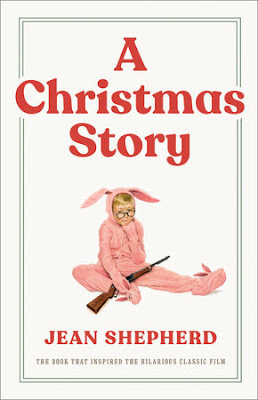The Many Incarnations of “A Christmas Story”

The annual year-endannouncement of new inductees into theNational Film Registry is always cause for excitement. Some films are chosenfor their aesthetic excellence, others for their social impact or historicsignificance. I was personally most thrilled by the inclusion of 1995’s Apollo13. Having written a biography of the film’s director and guiding spirit,Ron Howard, I know just how special this film is, and how challenging it was tomake. I was also pleased to see Ang Lee’s The Wedding Banquet on thelist. This 1993 romantic comedy about a Taiwanese immigrant to the U.S. ishilariously funny. Yet it also presents a serious glimpse of the complexitiesof being gay while remaining a part of traditional Chinese culture. But the commentariesI’ve heard about the new list have tended to focus on the fact that this year’scrop includes two family-favorite holiday movies, 1993’s The NightmareBefore Christmas and 1990’s Home Alone.
These were hardly the firstholiday films to make the list. A somewhat sardonic little flick called AChristmas Story was welcomed onto the registry ‘way back in 2012. A Christmas Story, released not long afterThanksgiving in 1983, at first attracted no particular attention. It then beganwinning awards, particularly in Canada, and has since spawned a cottageindustry of sequels, both in theatres and on television. I became interestedafter recently seeing a stage musical version (score by rising stars Benj Pasek and Justin Paul) that debuted on Broadway in 2012 and is now belatedly touringthe U.S. I’m not exactly a connoisseur of Christmas entertainment, but this waslively and fun.
A Christmas Story is based on a series of wry semi-autobiographical monologuescreated by radio humorist Jean Shepherd and published in his 1966 collection, In God We Trust, All Others Pay Cash.Shepherd helped write the screenplay for the film (co-written by directorBob Clark) and he serves as its narrator, the now-adult Ralphie Parker. YoungRalphie (played by Peter Billingsley) is growing up in a small Indiana town,circa 1940. He lives in a large but creaky old house with his small brother,his loving mom (Melinda Dillon), his cranky “old man” (Darren McGavin), ahighly temperamental furnace, a prize lamp that looks like a woman’s leg, and apack of ferocious dogs next door. Christmas is coming, and Ralphie has set hissights on the perfect gift from Santa: a Red Ryder Carbine Action 200-shot Range Model airrifle. But whenever he makes his wishes known, he gets the sameanswer: “You’ll shoot your eye out.” (This refrain becomes the musicalversion’s very best number, performed by a grade-school teacher whometamorphoses into a slinky tap-dancing vamp.)
The movie has so many fansthat the makers of the stage musical clearly felt obliged to include everymemorable moment. There is, for instance, a crabby (and, yes, inebriated)department-store Santa who shoves little kids down a colorfully snow-decoratedslide if they don’t respond quickly enough to his “What do you want forChristmas?” There’s the hideously pink bunny suit from dear Aunt Clara thatpoor Ralphie is required to model for his family. There’s the school buddy who responds to atriple-dutch-dare and gets his tongue stuck to a freezing flagpole. There arethe hungry next-door dogs who make off with the newly-roasted Christmas turkey. (When it comes to theatre,no one can resist seeing live animals on stage.) And there’s the happy wrap-upscene at a local Chinese restaurant. Personally, I don’t think small boys andguns go together, but this amiable show is hard to resist.
Beverly in Movieland
- Beverly Gray's profile
- 10 followers



